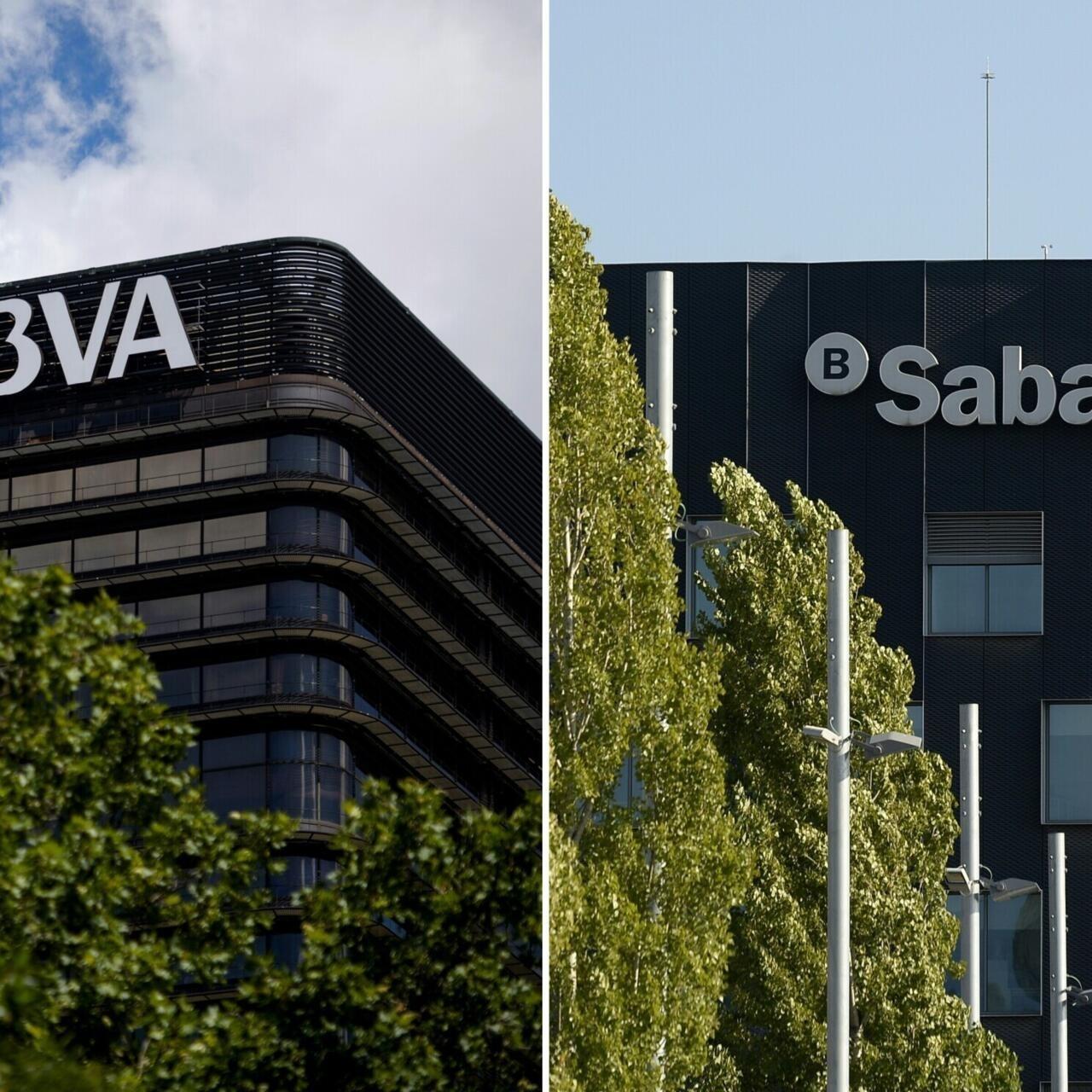In the intricate tapestry of Spain’s financial landscape, the looming possibility of major bank mergers often stirs a mixture of anticipation and skepticism among observers. One narrative that has captured the imagination of many is the potential takeover of Banco Sabadell by the banking giant, BBVA. This tale, weaving through the avenues of finance, regulatory scrutiny, and market dynamics, encapsulates more than just a business deal; it symbolizes the evolving face of banking in Spain and perhaps, the broader Eurozone. Yet, as the chapters unfold, the merger that once seemed written in the stars now hangs in the balance, shrouded in a cloud of uncertainty. This article embarks on a journey to explore the intricacies and hurdles that cast doubt on the BBVA’s takeover of Sabadell, delving into the intricacies of banking operations, regulatory environments, and the strategic considerations that could either forge a new banking titan or leave the status quo untouched. Join us as we unravel the story behind why this high-profile banking union in Spain may remain an elusive dream.
Navigating the Waters of Spanish Banking: The Unlikely Union of BBVA and Sabadell
Amidst the swirling currents of Spanish banking consolidation, the speculated merger between Banco Bilbao Vizcaya Argentaria (BBVA) and Banco Sabadell has intrigued financial observers far and wide. On the surface, this union appears to be a strategic masterstroke, promising to alter the Spanish financial landscape considerably. However, beneath the veneer of potential success, several formidable barriers loom large, hinting that this banking behemoth may never stride forth from the realm of speculation.
First and foremost, regulatory hurdles stand as towering sentinels against the swift consummation of this merger. The regulatory framework in Spain, designed to ensure financial stability and protect consumer interests, demands a rigorous scrutiny of any deal of this magnitude. Factors such as the impact on competition, implications for consumer choice, and systemic risk considerations would all undergo thorough examination.
-
Cultural and Operational Integration: Achieving a seamless melding of distinct corporate cultures and operational systems represents another significant challenge. BBVA, with its global footprint, and Sabadell, deeply rooted in domestic banking, embody divergent philosophies and practices that could complicate unification efforts.
-
Financial Health Discrepancies: The contrasting financial health and asset quality of BBVA and Sabadell could further complicate negotiations. Aligning their valuation expectations and agreeing on an equitable exchange ratio for shares might prove to be a Herculean task, potentially derailing discussions before they gain momentum.
Moreover, the strategic objectives of both entities add layers of complexity to the potential merger. BBVA’s focus on expanding its digital banking frontier contrasts starkly with Sabadell’s traditional banking approach, raising questions about the merged entity’s future direction. As we navigate these choppy waters, it’s clear that while the merger offers a glimpse into a commanding future for Spanish banking, the path to actualizing this vision is fraught with uncertainties that may well keep it from ever becoming a reality.
| Challenge | Details |
|---|---|
| Regulatory Approval | Comprehensive review processes and stringent conditions could delay or block the merger. |
| Cultural Integration | The formidable task of blending two distinct corporate cultures without disrupting operational harmony. |
| Financial Disparities | Significant differences in financial health and asset quality could hinder the agreement on shared valuation. |
| Strategic Alignment | Varying strategic priorities may conflict, affecting the envisioned synergy and efficiencies. |
The Roadblocks to Merger: Regulatory Hurdles and Market Realities
Within the labyrinth of financial mergers, two primary obstacles loom large, casting long shadows over the potential consolidation between BBVA and Sabadell. On one hand, the regulatory hurdles are akin to a Herculean test, demanding not just compliance with domestic banking laws but also negotiating a maze of international financial regulations. Regulators, wearing the hat of guardians of financial stability, scrutinize such deals with an eagle eye, ensuring that they don’t birth giants capable of monopolizing markets or becoming ‘too big to fail’. This scrutiny isn’t just a rubber stamp; it’s a probing, exhaustive process, looking into every nook and cranny of the proposed merger’s impact on competition and consumer choice.
On the other hand, the market realities are equally daunting. The banking sector in Spain, much like the rest of the world, is under significant pressure, grappling with low interest rates, digital transformation, and a fiercely competitive landscape. BBVA and Sabadell are not just navigating these troubled waters but are also contending with the market’s reaction to their potential merger. Shareholders, customers, and even employees wait anxiously on the sidelines, speculating on outcomes. The deal must make sense not just on paper but in the real-world marketplace, where sentiment and perception often dictate the terms of success or failure. Economic synergy is crucial, but so is the seamless melding of corporate cultures and technology platforms, a challenge that has scuppered many such ambitious deals in the past.
| Regulatory Hurdle | Extensive scrutiny from both domestic and international regulatory bodies to prevent market monopoly and ensure financial stability. |
| Market Realities | Adapting to low interest rates, digital transformation, and maintaining competitive edge. |
| Stakeholder Sentiment | Shareholder, customer, and employee perception and acceptance of the merger. |
| Cultural Integration | The challenge of merging corporate cultures and technology platforms effectively. |
In detailing these roadblocks, it becomes evident that for BBVA and Sabadell, the path to merger is anything but straightforward. Confronted with these formidable challenges, the prospect of a successful union becomes increasingly complex, woven with both regulatory tapestries and the stark threads of market realities.
Beyond the Headlines: The Strategic Implications for Spain’s Financial Landscape
In the intricate tapestry of Spain’s financial sector, a potential merger between Banco Bilbao Vizcaya Argentaria (BBVA) and Banco de Sabadell stands out as a mesmerizing thread that could weave a new narrative of consolidation and efficiency. The ambition behind this potential fusion is clear: to create a banking behemoth capable of competing on a global stage, enhancing digital transformation efforts, and realizing significant cost synergies. While the strategic rationale is compelling, a myriad of factors weave a complex picture, indicating that this merger might remain an unfulfilled prophecy.
Exploring the intricacies behind why this grand union may never materialize reveals a labyrinth of economic, regulatory, and competitive considerations. Firstly, the regulatory landscape in the European Union is notably stringent, with the European Central Bank (ECB) and other regulatory entities maintaining a watchful eye over banking consolidations to prevent systemic risks and ensure financial stability. Antitrust concerns and regulatory hurdles could thus present formidable barriers. Secondly, the integration challenges post-merger are monumental. Aligning IT systems, corporate cultures, and operational frameworks across two large institutions is a Herculean task, fraught with potential pitfalls and unanticipated costs. Lastly, competition within Spain’s banking sector remains fierce, with numerous players vying for market share. The emergence of a combined entity could trigger defensive maneuvers by competitors, potentially eroding the theoretical benefits of the merger.
| Consideration | Implication | Outcome |
|---|---|---|
| Regulatory Scrutiny | High barriers to approval | Delayed or blocked merger |
| Integration Challenges | Increase in operational costs | Lower than expected synergies |
| Competitive Landscape | Intensified market rivalry | Diminished market power |
The constellation of these factors casts a cloud of uncertainty over the proposed consolidation. In essence, while the merger between BBVA and Sabadell gleams with strategic allure, the actual path to realization is strewn with obstacles that could well make it a beautiful theory rather than a concrete achievement. Hence, stakeholders in Spain’s financial landscape watch with bated breath, pondering if this ambitious merger will ever transition from the drawing board to reality.
A Bridge Too Far or a Missed Opportunity: Evaluating the Future Without a BBVA-Sabadell Merger
In the labyrinth of Spanish banking, the path not taken between BBVA and Sabadell has rippled through the financial sector, stirring a pot of could-have-beens and what-ifs. The potential merger, once poised to redefine market dynamics, now stands as a testament to the delicate dance of consolidation and competition. It begs the question of whether sidestepping this alliance spells a strategic misstep for both entities or a prudent avoidance of unforeseen pitfalls. Particularly for BBVA, a bank with a voracious appetite for expansion and innovation, the decision to walk away from talks with Sabadell has been a topic of much speculation. Was this move a cautious step back from a bridge too far, or does it signify a missed opportunity to dominate the Spanish banking landscape?
Without the merger, both banks continue on parallel yet divergent paths, underlining a future of singular challenges and opportunities. BBVA, known for its prowess in digital banking and international presence, might find itself looking elsewhere to bolster its market position. Meanwhile, Sabadell, with its robust portfolio in domestic and SME banking, faces the daunting task of navigating the post-pandemic economic recovery solo. This separation has not only reshaped their individual strategies but also the competitive battlefield of Spanish banking. Below is a snapshot of the potential impacts and challenges awaiting both banks:
| Bank | Challenges | Opportunities |
|---|---|---|
| BBVA | – Integrating technology with traditional banking – Expanding international footprint |
– Leading in digital banking innovation – Capitalizing on emerging markets |
| Sabadell | – Strengthening capital position – Reducing non-performing assets |
– Focusing on core domestic market - Enhancing SME banking services |
The prospect of what could have been a transformative merger has now transitioned into a strategic reflection, leaving both BBVA and Sabadell to independently chart their course in an ever-evolving banking sector. The road not taken, fraught with potential rewards and risks, leaves industry watchers pondering whether abstaining from unity will indeed fortify their individual fortitudes or if, in times to come, this decision will be looked back upon as a pivotal moment when a great leap forward was forsaken.
Future Outlook
In the vast and intricate tapestry of Spain’s banking landscape, the potential union between BBVA and Sabadell emerges as a captivating narrative, rich with implications for the future. Yet, as we’ve explored, this merger dances on the edge of possibility, its fate hanging in the delicate balance of financial pragmatism, regulatory hurdles, and the unpredictable whims of market forces.
As the sun dips below the horizon, casting the bustling streets of Madrid and the serene beaches of Costa Brava into twilight, the story of BBVA and Sabadell quietly unfolds, a testament to the dynamic and ever-evolving world of Spanish banking. Whether these two giants will wander their paths separately or together remains a question only time can answer, leaving us to ponder the endless possibilities that lie ahead.
As the chapter closes on this particular tale, let us take with us not only the intricacies of this potential merger but also an appreciation for the broader narrative of banking in Spain—a realm where tradition meets innovation, and where every decision, merger, and acquisition weaves yet another thread into the fabric of Spain’s economic and financial landscape.
In the end, whether BBVA’s takeover of Sabadell sails towards completion or drifts into the annals of what-could-have-been, the journey itself enriches our understanding of the complexities and challenges that define Spanish banking today. As we continue to navigate these waters, let us remain ever curious, ever vigilant, and always ready to embrace the next twist or turn in this ongoing story of finance, strategy, and human ambition.



